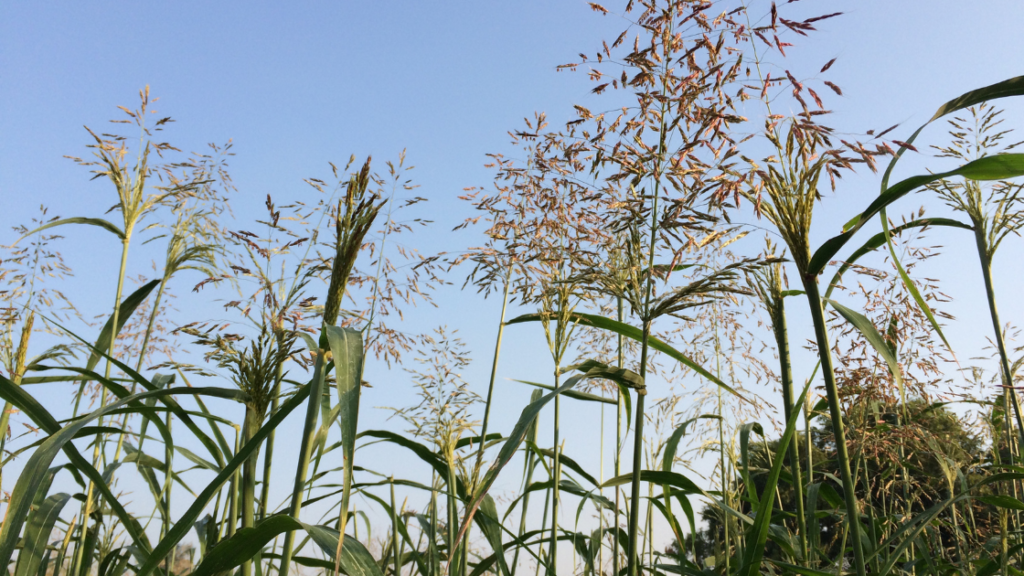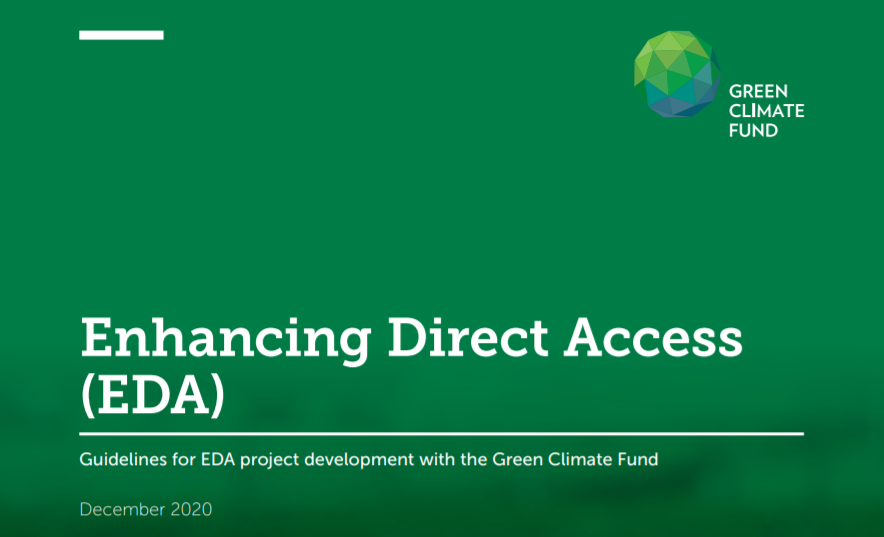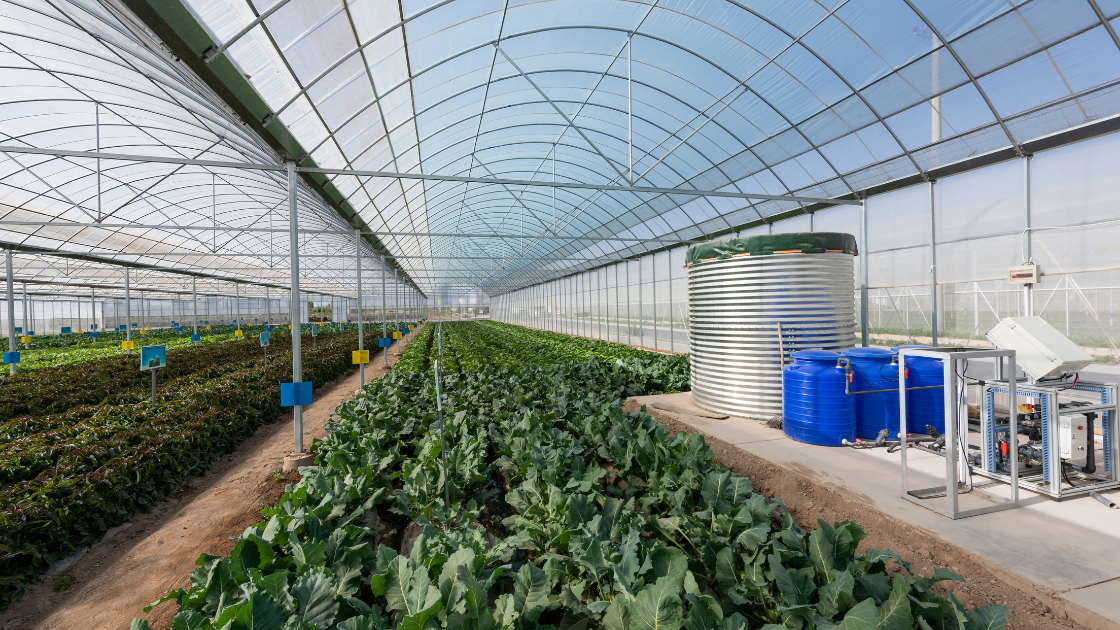Direct access fundamentals: Enhanced Direct Access Pilot Programme
26 April 2021, Category: All insights, News, Tags: direct access, enhanced direct access pilot programme

This series examines each of the Green Climate Fund’s (GCF) special assistance programmes to better understand what services are available to Accredited Entities (AEs) and how they can benefit low-carbon projects. Building on our previous articles on the Readiness Programme, the Project Preparation Facility (PPF) and the Simplified Approval Process (SAP), this article explores support provided through the Enhancing Direct Access (EDA) Pilot Programme.
Accessing climate finance is not always simple or quick, and gaining funding for low-carbon projects can be extremely challenging. Equally, active engagement and project ownership, especially at the local level, may often be lacking. To help counter these difficulties, the GCF created several forms of special assistance to help Direct Access Entities enhance their project development capabilities.
What is the EDA Pilot Programme? Process and key features
The goal of the Enhanced Direct Access (EDA) Pilot Programme is to enhance country ownership and boost access to climate finance for a variety of entities, such as sub-national, national and regional, and both public and private bodies. Moreover, the programme seeks to build stronger engagement by empowering local stakeholders throughout the process by implementing a devolved decision-making process. That is, decisions on funding and project oversight can take place at the regional or national level.
The EDA is different from other forms of special assistance because projects can be expanded to include sub-projects without needing them to be included within the initial funding proposal or being submitted to the GCF for approval. Instead, the decision-making mechanism is decided through pre-approved selection criteria. Given the typically lengthy review and approval processes, such a feature saves valuable time.
The GCF notes these projects “hinge their design on established or supporting existing financial vehicles that can provide finance to subprojects.” That is, once a funding proposal under the EDA has been approved, the decision-making body described within the proposal should approve the subprojects to be financed through the established financing mechanism/vehicle.
As the name suggests, Direct Access Entities (DAEs) can submit projects under the pilot programme. Only those already accredited may submit full funding proposals while those either accredited or applying for accreditation can submit a concept note. For the DAEs seeking to submit proposals under the Simplified Approval Process, the submission of a concept note is mandatory.
With a stronger focus on providing finance to in-country organisations, the EDA seeks to increase the degree to which local parties are involved. By providing the opportunity to give greater control to locals in vulnerable communities, the EDA can allow a context-specific approach rather than a one-size-fits-all approach. Equally, the empowerment of locals provides a level of country ownership and buy-in that may be missed under other forms of special assistance. By targeting local actors and addressing the needs of communities, it is thought financial resources will be used more effectively.
What projects fall within the EDA? Eligible activities and ongoing projects
The programme is intentionally designed to be flexible, and proposals can include any adaptation and mitigation activities that fall within the GCF’s result areas:
- Agriculture, forests and land use
- Buildings, cities, industries and appliances
- Ecosystems
- Energy
- Health, food and water security
- Infrastructure; community livelihoods
- Transport
With such broad areas to choose from, projects can take many forms. Nonetheless, EDA activities should focus on providing direct support to small and medium enterprises or local communities and should address specific needs relating to the vulnerable, such as addressing gender aspects. Moreover, activities must also limit environmental and social risks, and fall within categories B and C.
While the GCF has not set a limit on the maximum requested financial assistance, it approved USD 200 million in total spending for the programme to fund at least 10 projects, including at least four pilots in target countries (small island developing states, least developed countries and African states).
Equally, the Fund has set the target of funding at least four projects in less developed countries, small island developing states and African nations. As of April 2021, two projects have been approved, both of which fall within these priority categories:
- A climate change resilience adaptation project in Namibia that aims to build capacity in community forests and facilitate low-carbon rural development to benefit over 75,000 people. One component of the project is capacity building in the local communities and the second component is a resilient grant facility for Community-based Natural Resource Management (CBNRM) networks. This facility will provide grants in three investment areas focusing on the development and strengthening of livelihoods.
- A multi-country project in Antigua and Barbuda, Dominica and Grenada to help strengthen communities and their infrastructure during extreme weather events such as hurricanes and higher temperatures. This project makes small grants available to community organisations while loans to households and small businesses helps build resilient infrastructure. In doing so, over 82,000 people are expected to benefit.
With only two approved projects within five years, some say that the pilot has not lived up to high expectations. For example, the World Resources Institute recommends restructuring the EDA by “removing the funding cap and clarifying how projects funded through this modality differ from projects funded through the normal project approval process.” Such changes could help streamline direct access and improve the current system. Several other projects are in the pipeline and the GCF aims to evaluate the pilot programme in 2021.
This series is authored by E Co. Senior analyst, Marcus Arcanjo.




Join the conversation by posting a comment below. You can either use your social account, by clicking on the corresponding icons or simply fill in the form below. All comments are moderated.